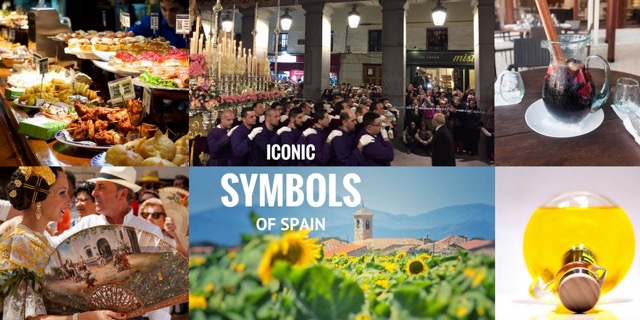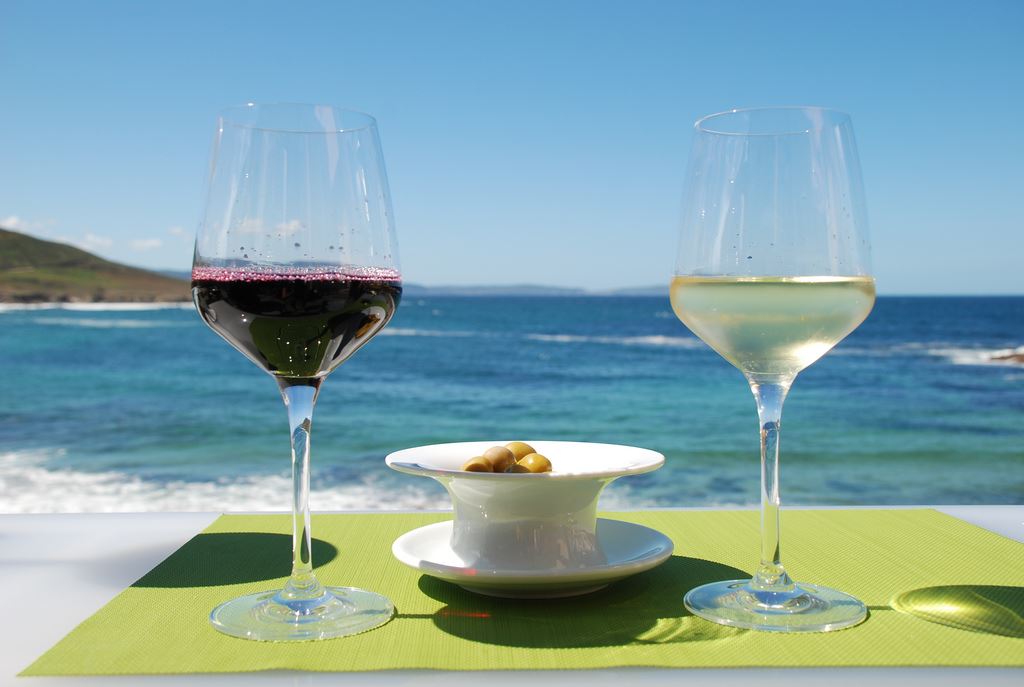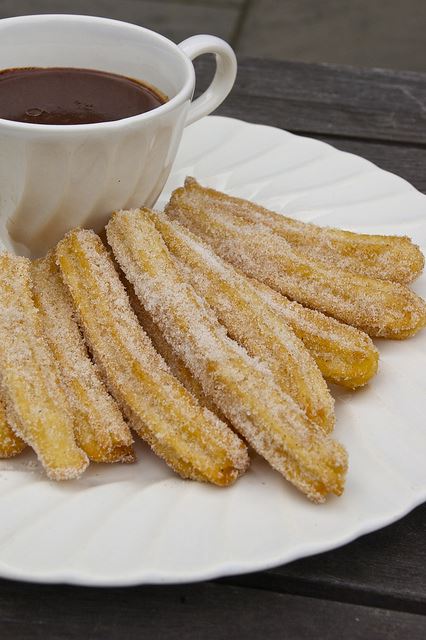Want to understand and perhaps include some of the famous symbols of Spain in your next trip? Totally Spain has been designing custom itineraries here in Spain for almost two decades so take our insider advice and make your next holiday to Spain extra special!
Symbols of Spain & How to Include Them in Your Trip
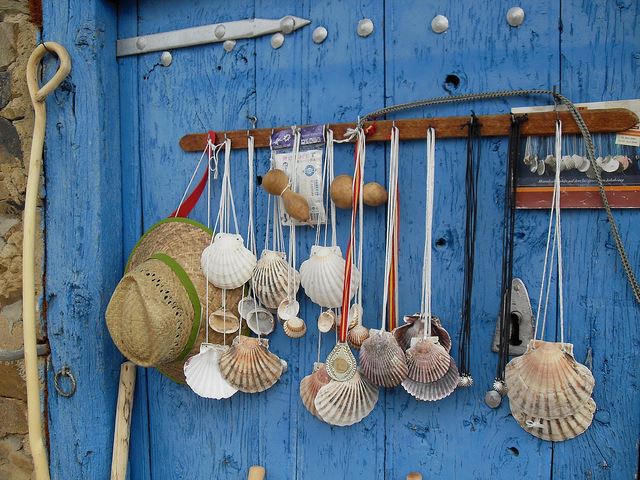
The scallop known as a ‘vieira’ is the symbol for the Camino de Santiago in Northern Spain. Photo credit: CGPardillos via photopin cc
1 The Camino Scallop Shell
The Camino de Santiago is becoming more and more popular and its most famous symbol is the shell known as ‘vieira’ or scallop shell. Traditionally attached to pilgrim’s cloaks or hats during their journey to Santiago, it is often compared to the symbol of Venus – meaning the renaissance of a person – referencing Boticelli’s painting The Birth of Venus. It was said to have spiritual significance but also practical – as the shells could be used for drinking from and as a measure for donations of food from churches along the way. It is also said that the shell resembles the foot of a goose – which is associated with a new path or new beginnings. We like the fact that the shell shows many lines converging – which is exactly what the Camino is. We’ve helped lots of clients walk and cycle sections of the Camino and we’ve also prepared Camino-themed driving holidays. Read The Many Ways of Doing the Camino here and Driving the Camino de Santiago here.
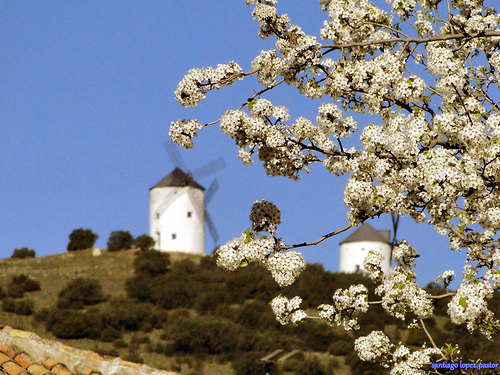
Re-enact that Don Quixote moment when visiting the wonderful windmills in Castilla-la Mancha! photo credit: santiagolopezpastor Puerto Lápice via photopin (license)
2 Don Quixote’s Windmills
One of the most iconic scenes of Spain’s most famous book features Don Quixote fighting windmills which he mistakes for giants and hence came the phrase ’tilting at windmills’. When Cervantes published Don Quixote in 1615, it was easy to find these typical black and white structures used for milling. Nowadays, one needs to travel to Consuegra in Castilla-la-Mancha where you can still find windmills, some of which you can step inside and visit. The best views are from Consuegra Castle which is interesting in itself. Tie in your visit with a trip to Toledo which is just 45 mins drive from Consuegra. We can arrange a private driver to collect you from your hotel in downtown Madrid and whisk you away to Toledo and Consuegra and deposit you back to your hotel that evening. Read about the Benefits of Hiring a Private Driver and Guide in Spain here.
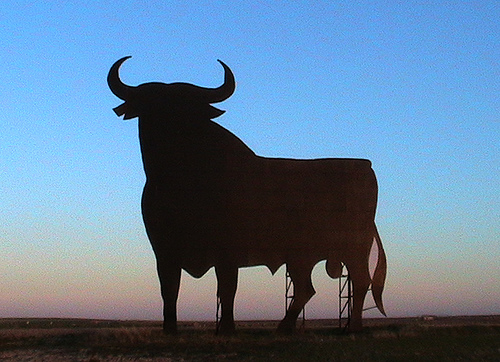
You don’t need to be near a bullring to see the importance of the ‘toro’ in Spain. photo credit: -Merce- toro osborne cordovilla via photopin (license)
3 The Spanish Bull
The ‘toro’ and the ‘torero’ are symbols of Spain that many instantly recognise. The San Fermin bull running festival at Pamplona, immortalised by Ernest Hemingway in The Sun Also Rises, is still a huge draw for international travellers but there are other ways to observe the importance of the bull in Spanish society. To learn about the history of bullfighting, you can visit the bullrings’ museums where you’ll see a selection of the traditional bullfighter outfits and perhaps even see copies or originals of Goya’s bullfighting paintings. Another way is to visit a bull breeding ranch and learn about the life of a fighting bull before it gets to the bullring. Also, as you drive around Spain, keep your eyes peeled along motorways for the enormous silhouette of a black cut-out bull (pictured above) which was first developed as a marketing ploy by the Osborne winery in 1957. You can learn about this unique marketing story at the winery’s HQ in el Puerto de Santa Maria (Cadiz). We are very partial to the sherry wineries in Spain – read our post about visiting Jerez here.
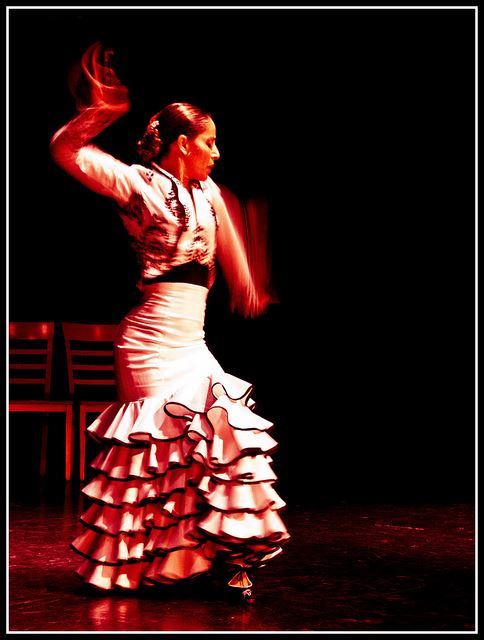
See a live flamenco show or catch the Sevillana dancers during the month of April. Photo credit: Flavio~ via photopin cc
4 Flamenco
Castanets, pinned back hair, polka-dot flamenco skirt and those heels are typical symbols of Spain and of flamenco especially – the artistic expression that fuses song with dance. Flamenco is sung and played by seated musicians while the dancers move to the rhythm of guitar, hand-clapping and castanets to depict scenes of courtship or personal tragedy. It was recognised for its cultural importance by UNESCO in 2010 and its most famous dancers includes names of international repute such as Joaquin Cortes and Maria Pages. Flamenco’s musicians are equally celebrated in Spain and abroad and you should download an album or two from the mythical Paco de Lucia and Cameron de la Isla before stepping on Spanish soil. If you want to experience a live flamenco show, you’ll find events in all the major cities but we recommend Seville and Cordoba for the best performances. Remember that you can also catch great ‘flamenco-esque’ colour and style in downtown Seville during the Feria de Abril when the entire city dresses up and parties in style!
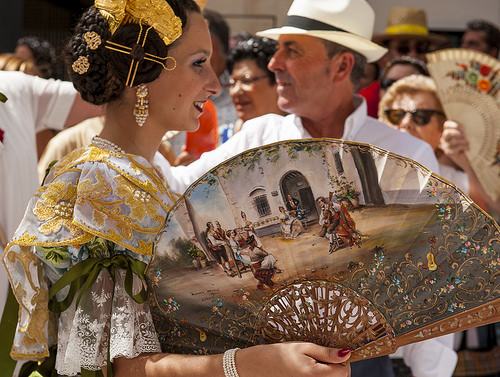
The fan carried by a ‘fallera’ in Valencia is so much more than a fashion accessory – it’s like a mobile work of art. Photo credit: keith ellwood Fallera Spain via photopin (license)
5 The Spanish Fan
Although the Spanish fan is used in flamenco performances, it also features in everyday life in Spain. Interestingly, two fans were discovered in Tutankhamen’s tomb (12th century BC) so we know it’s not a recent invention. High society throughout Europe relied on the fan to demonstrate class and wealth up until the early 20th century – when they fell out of fashion everywhere outside Spain. If you want to learn about the history of this iconic accessory and see how fans are made, you must visit the village of Aldaia near Valencia where 25 artisan fan makers reside. Fans have been made in Aldaia since the 19th century and the Fan Museum offers 150 examples of the best. You can also visit many of the artisan workshops to get a wonderful sense of the history and creativity involved. Wherever you are in Spain during the Summer months, we recommend picking up a fan for yourself to keep it in your bag or daypack for those moments in between air-conditioned buildings when you need to rely on age-old traditions. You might also want to learn the fan lingo (to make sure you’re not sending mixed messages out there!) Read about fan etiquette and meanings here.
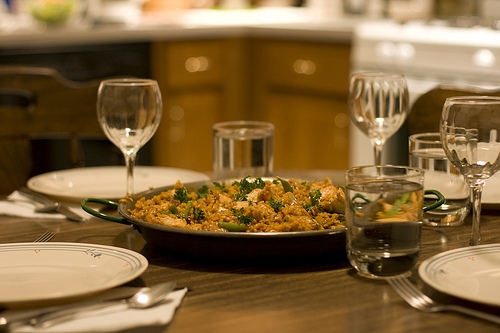
Paella is a tricky dish to order in Spain. photo credit: The Finished Product via photopin (license)
6 Paella
One of the prime food symbols of Spain and Spain’s most famous dish without a doubt. Valencia is where it was first created. The region of Valencia is still a major producer of rice – and you should visit the Albufera National Parkland – one of the largest freshwater parks in Spain – to learn about the ancient cultivation traditions still in use such as the flooding of the fields. You can visit the village of El Palmar and eat some wonderful rice-dishes using local ingredients. And how about a relaxing boat-ride after lunch on the lagoon where you can enjoy the wildlife of the parkland? Learn all you need to know about paella (and more) in our post on the topic. And yes, it is traditionally made with rabbit meat but you can order it with chicken, pork, seafood or just the veg!
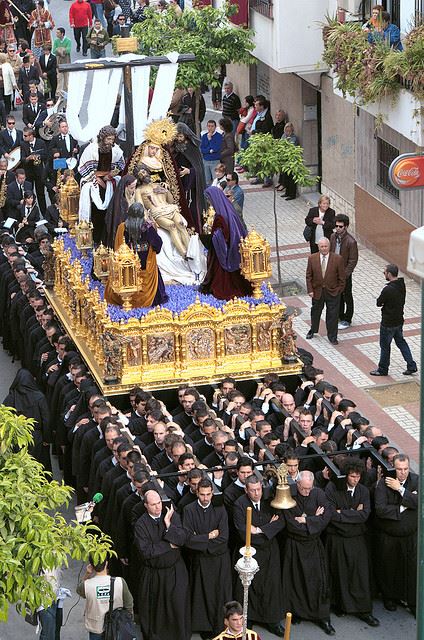
Only in Spain! 200 costaleros are shouldering the immense weight of this Easter scene through Malaga. Photo credit: Daniel Hector Stolfi Rosso via photopin cc
7 Semana Santa – Easter Week
The scale of the solemn Easter processions is unique to Spain. It’s not clear when the first Semana Santa procession took place but it seems to be connected with the return of the Marqués de Tarifa to Spain from the Holy Land in 1521 when he introduced the Stations of the Cross and gradually this was transformed into processions of the crosses. Today the processions are managed by the ‘cofradias’ or brotherhoods in each city. The key symbols of the processions are the ‘nazarenos’ who are the people that walk in the procession – the name comes from the robe they wear. They wear a conical hat with cut-out eyes called a ‘capirote’ and its design is intended to bring its wearer closer to heaven. Some of the nazarenos go barefoot, often wearing chains or shackles. Most will carry a candle although some will be carrying crests and even huge crucifixes. Another symbol of the processions are the swaying altars – carried by the ‘costaleros’ who might be carrying 50kg each. And keep an eye out for the widows who dress in black – including the black veil. To learn more about Easter celebrations and where to see the processions in Spain read our detailed post.
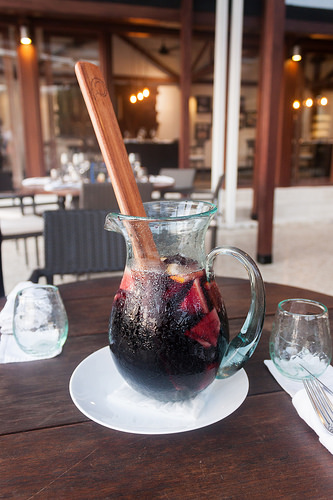
A jug of the humble sangria – always refreshing but not so easy to order out! photo credit: anastasia r A jug of red wine sangria with oranges and apples via photopin (license)
8 Sangria
Always associated with Spain but curiously this drink isn’t as easy to find here as you might expect. The recipe for sangria probably comes from the European-wide claret cup punch. Punch cocktails date back to the 1600s and crop up in Dickens novels and Jane Austen also refers to them. Sangria really made a name for itself at the World Expo in Flushing Meadows, New York in 1964 (you might be interested to know that sushi and Belgian waffles were also available for sampling). If you want to order a sangria in Spain, ask where it is prepared on the spot – or make it yourself as the ingredients aren’t difficult to get, and it’s worth doing properly. Don’t make the mistake of using good wine – everybody agrees the cheaper reds (with higher sugar content) are better suited to sangria. If you are in the Basque Country, skip the sangria altogether and have a ‘kalimotxo’ which is a blend of red wine and Coca-Cola.
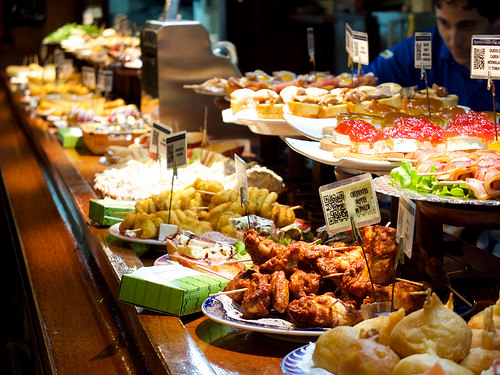
From humble origins, the Spanish tapa has gained in reputation and complexity. photo credit: Adam Franco Pintxos via photopin (license)
9 Tapas
Bars groaning under the weight of tapas is an image that is unique to Spain – although you can find a tapas bar in almost every major city of the Western world. Outside Spain, tapas tend to be eaten as a meal, in Spain they are really an appetiser to enjoy with a beer or glass of wine. Urban myths suggest that Alfonso X (King in the 13th century) kickstarted the tapa trend when he was recovering from an illness and could only digest small morsels of food. Another monarch, King Alfonso XIII, is also praised for popularising the tapa when a barman in breezy Cadiz in the early 1900s covered his wine with some bread to keep the sand out – and the fashion took off. Whichever story you like, the second is the most plausible as the word ‘tapa’ means cover. We recommend our clients take a gastronomy tour early on in their trip. In addition to sampling tapas, they get to taste ‘raciones’ which are larger than tapas and are freshly prepared dishes that are perfect for sharing. See what happens in our behind-the-scenes guide to gastronomy tours here. And read our detailed guide to the unwritten rules of tapas in Spain here.

Rafa Nadal is Spain’s best known sportsperson. photo credit: Marianne Bevis IMG_7360 via photopin (license)
10 Sporting Icon
Rafa Nadal, Pau Gasol, Miguel Indurain, Fernando Alonso, Ruth Beitia, Iker Casillas, Andres Iniesta or Seve Ballesteros. If you ask a visitor to Spain which is the best known and loved sportsperson, you will probably be given at least one of those names. Football is hugely important in Spain and we have organised visits to football games for clients interested in the game. We can also arrange golfing outings at courses played by or even designed by Seve Ballesteros. And we can highlight family businesses worth visiting – for example – did you know that Andres Iniesta’s family runs a winery? Whoever your favourite sportsperson is, we’d love to help you feel closer to them and the sport.
11 The Wine
Is never ceases to amaze us that so many people visit Spain for the food and wine – yet very few actually visit the wineries. Rioja is Spain’s most iconic wine region. Although many of the wineries date back to the late 19th century, some of the vines have been in place since the Romans. In the 17th century, vines became the predominant crop in much of the region and today, it is impossible to drive though the region without seeing the vines and the wineries. We encourage clients to visit the spectacular wineries and taste the wines created by names such as Marques de Riscal, CVNE and Tondonia to name a few. Check out our guides to the Rioja Winery Region and the Rioja Alavesa Wineries. More time on your hands? Why not take in the Ribera del Duero near Madrid and Galicia’s Rias Baixas too?
12 Chocolate & Churros
You can keep your tiramisu and crème brûlée. This Spanish treat is not only delicious but it can be enjoyed morning, noon and night. You’ll even find the churro vans open around the clock during fiestas. We were surprised to learn that the recipe is said to be Chinese in origin although it was served with salt rather than sugar. Portuguese merchants are said to have brought back the concept to Europe where the fluted-star shape was devised to provide more surface for the sugar to stick to. Others say it was the Spanish shepherds that came up with the recipe. Whoever it was, the Iberian explorers took the recipe to the Americas and when they returned with Aztec chocolate, the winning combination we adore was born. If you haven’t yet tasted churros with a hot thick chocolate drink, go to San Gines in Madrid (founded in 1894 and open 24 hours a day!) or ask your hotel for recommendation. Our personal favourites come from Chocolateria Aliva in Santander – a traditional churro cafe that’s been serving homemade sponge-cakes, pancakes and churros since 1960.
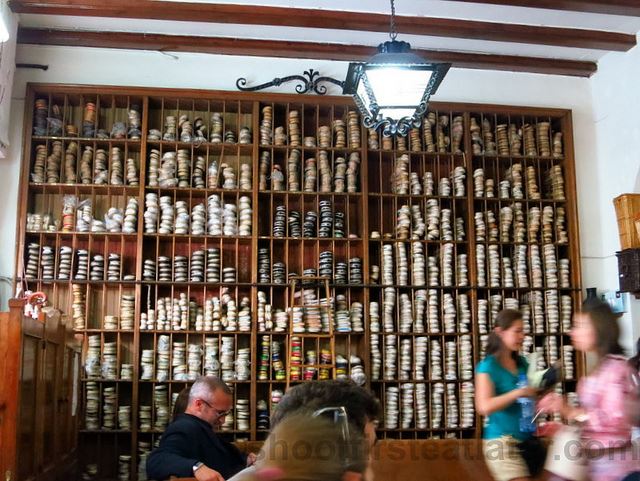
Wherever you purchase them, make sure they are ‘Made in Spain’. Photo credit: Shoot First, Eat Later via photopin cc
13 Espadrilles
Nothing says Summer in Spain more than a pair of espadrilles. One of the most iconic shoe designs – called alpargata or espardenya in Spanish – is great for hot days when your feet need to breathe. You’ll find them for sale all over Spain in the Summer months when both men and women rock the look. If you’d like to see the oldest pair in Spain, you need to visit the Archaeology Museum of Granada which has a pair of woven sole sandals from the late Neolithic period. The shoes come in and out of fashion with big names such as Lauren Bacall, Audrey Hepburn, Humphrey Bogart, Grace Kelly, Jacqueline Kennedy, Pablo Picasso, Salvador Dali, George Harrison and Jane Birkin all photographed wearing the espadrille. If you’d like to get your hands on this or any of the other classic Spanish designs, read our post on Spanish footwear here.

Liquid gold from Spain! photo credit: esencia andalusi jarra bola aceite de oliva esencia andalusi via photopin (license)
14 Olive Oil
In 2017, olive oil became the most exported food item from Spain – overtaking pork products (think chorizo and jamon) and citrus fruit. Spain is the largest producer of olive oil in the world and is estimated to produce half of the world’s olive oil. Andalusia is where the first recorded growth of olive oil is documented in Spain and we recommend you undertake a tour and tastings of these wonderful olive oils at one of the many co-operatives there. We are big fans of the countryside surrounding Baeza and Ubeda where this liquid gold tastes absolutely incredible. Pop into the Olive Oil Museum also in Baeza to learn about the history of the oil and we recommend booking a place on a cooking course in the area to enjoy this oil and its role in Spanish cuisine.
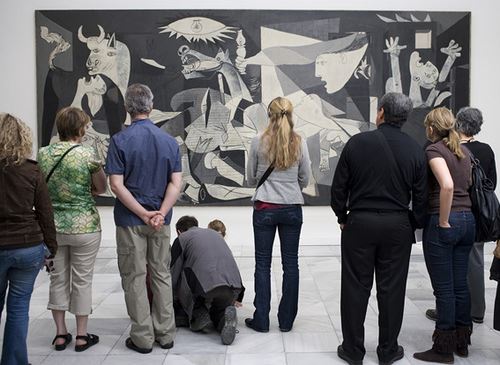
Picasso’s Guernika at the Reina Sofia museum in Madrid. photo credit: Museo Reina Sofía via photopin cc
15 Guernica by Pablo Picasso
Picasso’s masterpiece depicting the misery of the Spanish Civil War is a grim painting capturing the bombing of a town in Northern Spain. Picasso painted it in exile from Spain in Paris during the Spanish Civil War and the painting was exhibited at the World Fair in Paris in 1937. Today, it’s one of Spain’s most famous works of art and is on show at the Reina Sofia Museum in Madrid. Of course, there are other great iconic works of art from artists such as Dali, Velazquez, Goya and El Greco. To enjoy and experience their work to the full, we provide our clients with an expert guide for the art triangle that is the Reina Sofia, Thyssen-Bornemisza and Prado Museums in Madrid. We also suggest visiting the painters’ homes and home cities to learn how they lived and worked. We are big fans of the Sorolla House Museum in Madrid and Dali’s museum in Figueres and house museum in Port Lligat. Read this post about Salvador Dali’s Catalonia here and Madrid’s Niche Museums here.

La Sagrada Familia in Barcelona was the last project Gaudí worked on before his death in 1926. photo credit: Avatarmin Barcelona HDR 23-04-2016 (20) via photopin (license)
16 The Sagrada Familia
If you ask somebody to name Spain’s most iconic building, places such as the Alhambra, the Sagrada Familia, the Guggenheim, the Mezquita cathedral and the cathedrals of Seville, Santiago, Leon and Burgos will always crop up. It’s a very personal choice so we suggest you read our posts on Touring Architecture in Spain and our guides to the Alhambra in Granada, Gaudi’s Barcelona, Bilbao City, and the Best Churches in Spain before finalising your bucketlist of locations to visit.
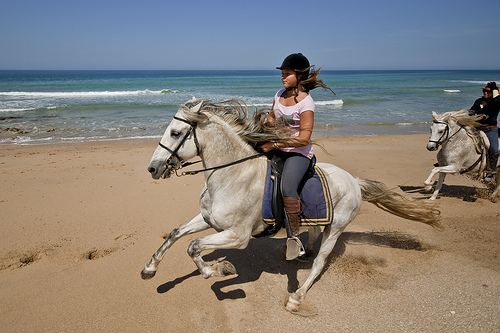
Fancy taking a horse out? photo credit: Warhanek Beach gallop via photopin (license)
17 Horses in Spain
Known for its athletic ability as a war horse and its handling of bulls with speed and agility, today you can appreciate the Spanish-PRE breed at the Royal Stables in Cordoba and Jerez. It’s also possible to take horse-riding classes and half-day, full-day and week-long trekking programmes throughout Spain where you’ll learn to handle the horses and get a real sense for the Spanish techniques in horse breaking and training.
Although its not for PRE horses, the Annual Horse Derby on the beach in Laredo, Cantabria is thrilling. (You can also combine this with a visit to Cantabria’s many caves where you’ll see ancient horses, bison and goats painted on the walls – giving some sense of the importance and longevity of this animal in Iberia.) If you want some wilder trails, you can’t beat the seasonal pastures in the Picos de Europa. If indoor show-jumping is your thing, check out Madrid Horse Week in Madrid every November. For an outdoor event, the annual Jerez Horse Fair is held in May.

The monument to El Cid in Burgos city. photo credit: Zoraida Jaime Monumento a El Cid (Burgos) via photopin (license)
18 El Cid
A native of Vivar just outside Burgos, Don Rodrigo Díaz was nicknamed ‘El Cid’ (probably from the Arabic phrase as-sidi meaning ‘The Lord’). The knight became a Spanish folk hero and the embodiment of chivalry and virtue – a Spanish Robin Hood if you like. He is remembered for fighting the North African Almoravides and contributing to the unification of Spain in the 11th century. Why not watch the 1961 film on El Cid starring Charlton Heston and Sophia Loren before embarking on your trip to Burgos and beyond? Want to see some other Spanish classic movies – read our post on Movies & Shows Filmed in Spain here.
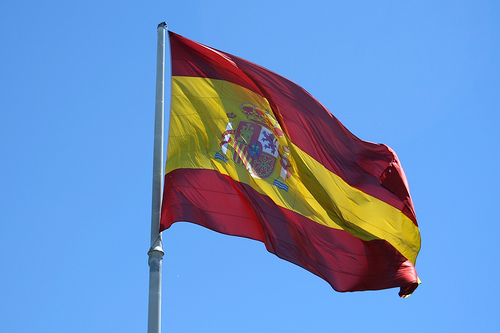
The combined red and yellow were first flown together as the Spanish Navy flag back in 1785. photo credit: petter palander 14×21 via photopin (license)
19 Red & Yellow of the Spanish Flag
These two colours outside Spain signify everything to the budding Hispanist. The two colours were selected by King Charles III in 1785 for the Spanish Navy flag because they were easy to identify on the high-sea. It was only adopted as the national flag in 1843 by Queen Isabel II. The design (mainly the crest) has been tweaked and altered on a number of occasions but the colours remain largely untouched. As you’ll see when you get to Spain, each region also has its own flag and these are proudly flown.

Easy to see there’s plenty of good weather here! photo credit: Armando G Alonso ✈︎ Only the sunflowers listen to the bells via photopin (license)
20 Spanish Sunshine
For many visitors, the weather is one of the most potent symbols in Spain. It’s what kicked off the tourism industry in the 1950s and is a major factor in making Spain the second most visited country in the world (after France) in 2017. Although we’ve featured the wonderful sunflowers in the image above, you should know that the most symbolic flower for Spain is actually the red carnation. We have written about the wonderful courtyard festival in Cordoba every May where you’ll find these carnations aplenty. And you can read about Spain’s Great Gardens here. We should point out that the climate does vary from region to region – you can read about the differences here in our post The Many Faces of Spain.
